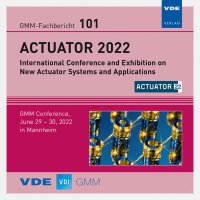Influence of a fixed twisting zone on Twisted String Actuation
Konferenz: ACTUATOR 2022 - International Conference and Exhibition on New Actuator Systems and Applications
29.06.2022 - 30.06.2022 in Mannheim
Tagungsband: GMM-Fb. 101: ACTUATOR 2022
Seiten: 4Sprache: EnglischTyp: PDF
Autoren:
Giacoppo, Giuliano A.; Meiringer, Johannes; Schaefer, Max B.; Mayer, Juliane; da Silva, Michael; Finke, Lars; Pott, Peter P. (Institute of Medical Device Technology, University of Stuttgart, Germany)
Inhalt:
Twisted String Actuation (TSA) is appropriate for disposable robotic-assisted endoscopes. Especially the advantages of a compact design, light weight, low noise, and low cost make a TSA attractive. To save further costs and achieve an even more compact design, a fixed twisting zone can be used instead of a variable twisting zone. Here, a bolt is used that fixes the twisting zone between the motor and the bolt instead of linear guidance resulting in a variable twisting zone. Thereby the length of the TSA can be reduced by 29.3 %. In this paper, the influence of the friction at the bolt on the string is evaluated on a test rig, while the fatigue strength of the drive is compared with that of a standard TSA with a variable twisting zone. For this purpose, a test rig was used, in which the TSA (Ø 0.25 mm, HDPE “Dyneema”) has to perform up to 1000 weight lifting task. The results show that there is no noteworthy difference in the efficiency of both TSA configurations. However, increased wear of the strings at the TSA with a fixed twisting zone can be seen. This leads to a faster failure of the strings as the friction on the bolt causes fray. After 813 ± 102 strokes the string break for the TSA with fixed twisting zone. For the TSA with variable twisting zone, the string could perform the scheduled 1000 strokes without failure. Since it is intended to use the TSA as a disposable product and it is assumed that not more than 100 strokes have to be made, the wear is not negligible but acceptable for a small number of strokes. Further research will be conducted in the future to increase efficiency and predict failure.


